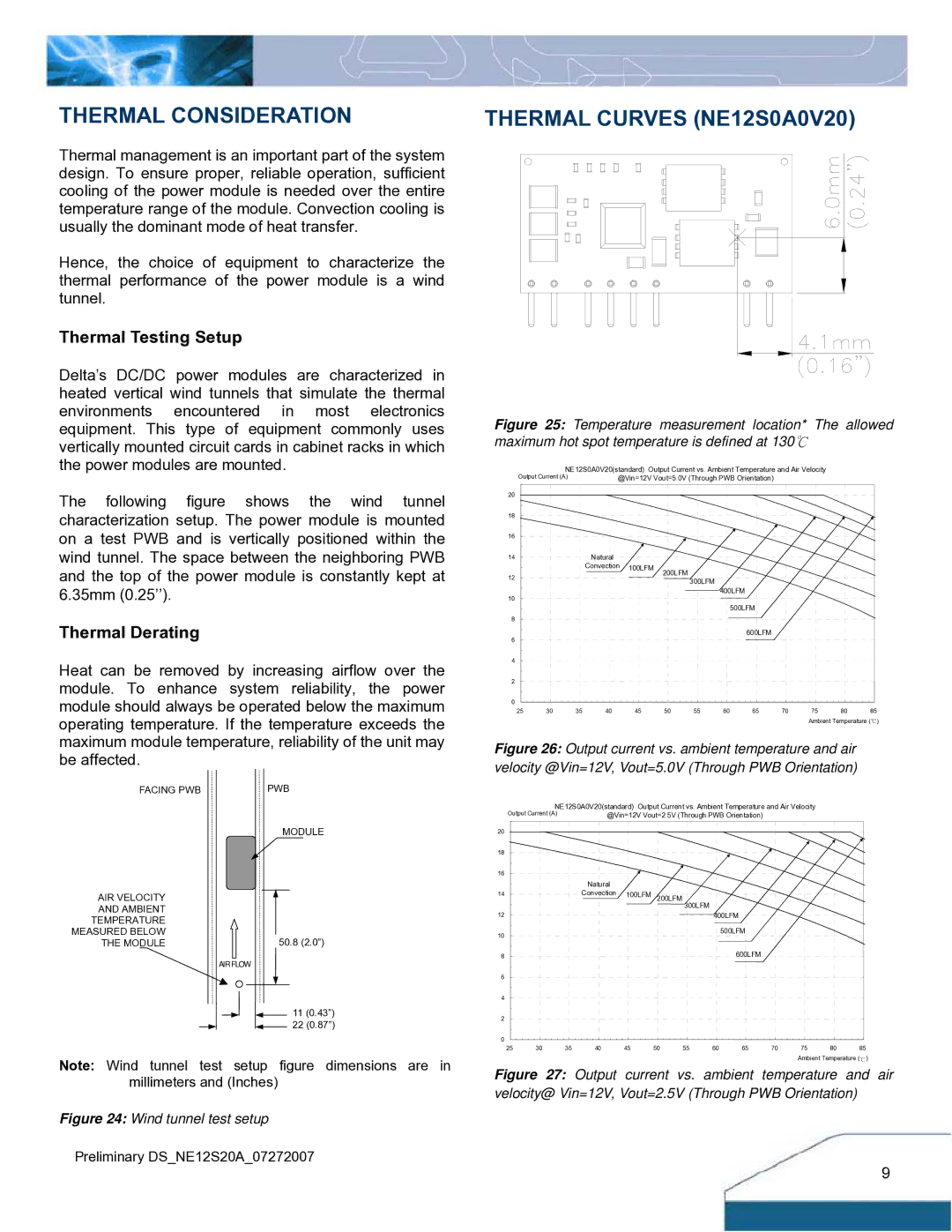0.59V~5.1Vout, 20A, 4.5V~13.8Vin specifications
Delta Electronics has established itself as a leader in the power supply sector, and their latest offering, a versatile DC-DC converter, epitomizes the company's commitment to innovation and efficiency. This device operates within an input voltage range of 4.5V to 13.8V and provides a robust output current of 20A, making it suitable for a wide range of applications.One of the key features of this DC-DC converter is its adjustable output voltage, which can be configured between 0.59V and 5.1V. This adaptability allows it to cater to diverse voltage requirements for various electronic components and systems. Additionally, the converter benefits from high efficiency, often exceeding 90%, which minimizes thermal generation and extends the lifespan of electronic systems.
The device employs advanced switching technologies, including synchronous rectification, which enhances efficiency during the conversion process. This not only helps in reducing energy waste but also lowers operational costs in environments where power consumption is critical. The design incorporates thermal management features to ensure reliable performance, even under heavy loads. The compact form factor of the converter also facilitates integration into tight spaces within electronic enclosures, making it an excellent choice for modern electronics requiring space-efficient solutions.
Another hallmark of this Delta Electronics product is its comprehensive protection features. It includes over-voltage, over-current, and thermal protection mechanisms, ensuring safe operation and mitigating the risk of damage from fault conditions. Furthermore, the converter is designed to withstand a wide range of operating temperatures, making it suitable for various industrial and commercial applications.
In summary, Delta Electronics' 4.5V~13.8Vin, 20A, 0.59V~5.1Vout DC-DC converter stands out due to its adjustable output voltage, high efficiency, robust protection features, and compact design. Its reliable performance and versatile application capabilities are a testament to Delta's dedication to providing high-quality power solutions that meet the evolving demands of the electronics industry. Whether utilized in industrial automation, telecommunications, or consumer electronics, this converter is poised to deliver exceptional performance and efficiency.

